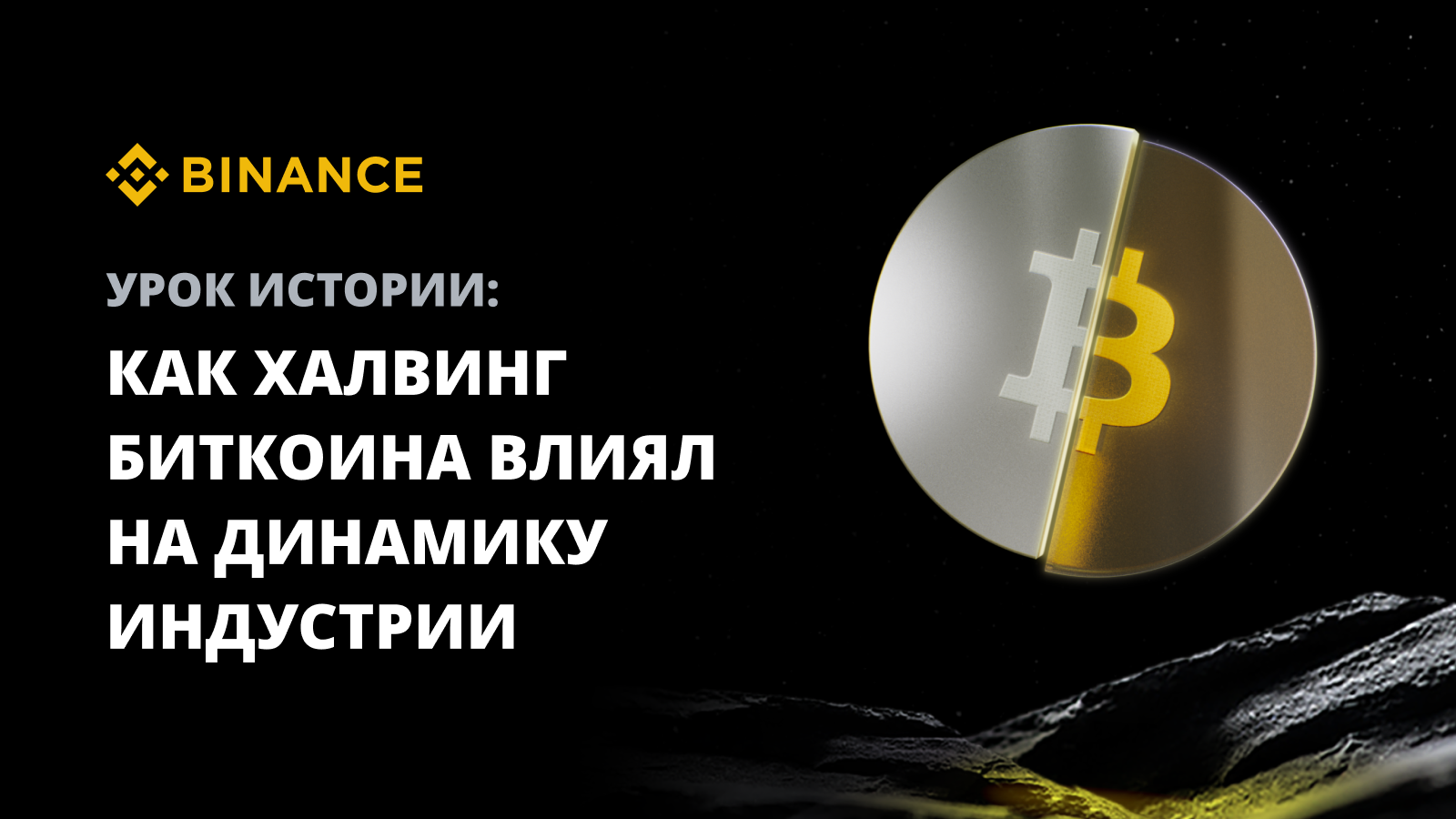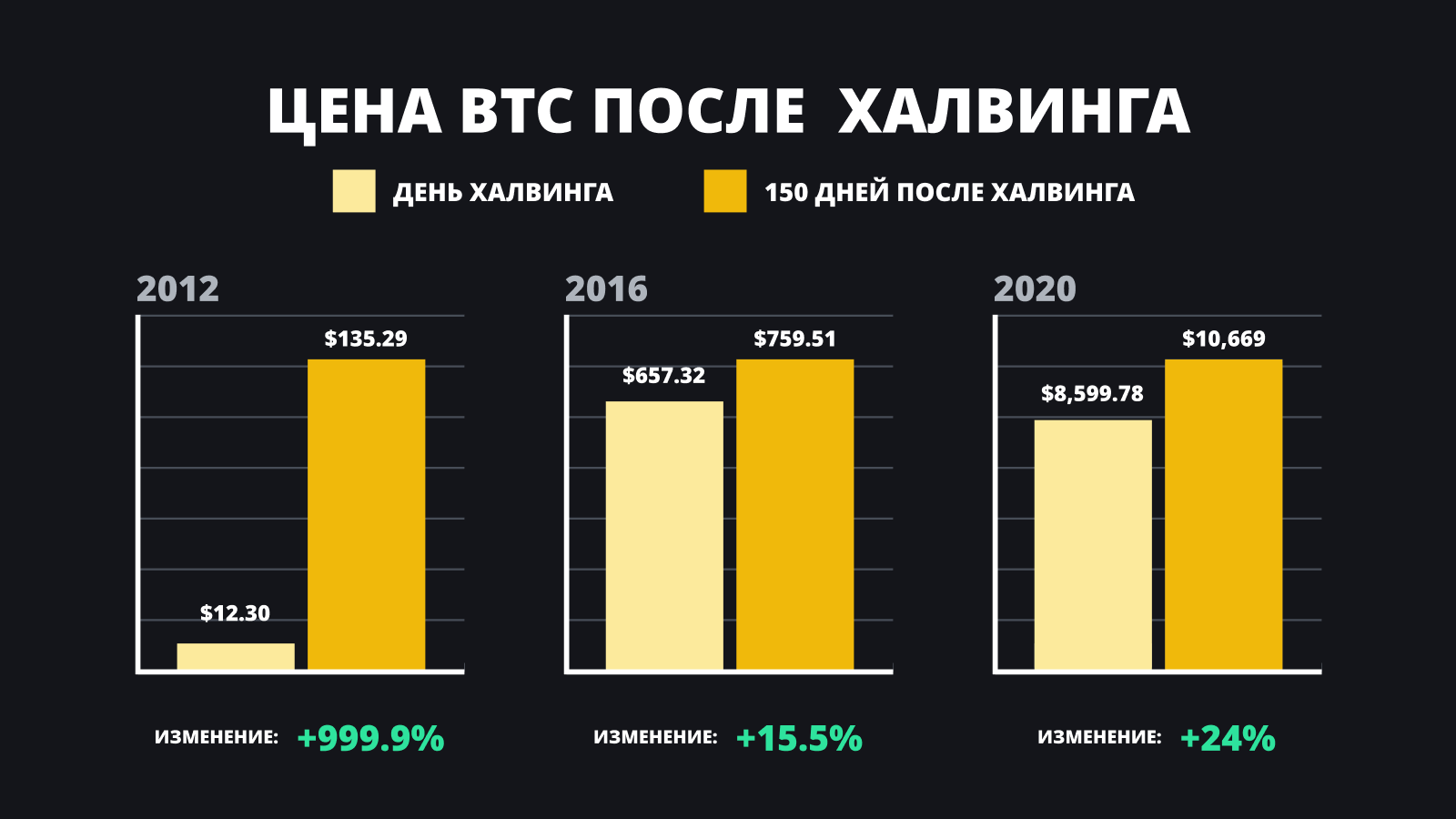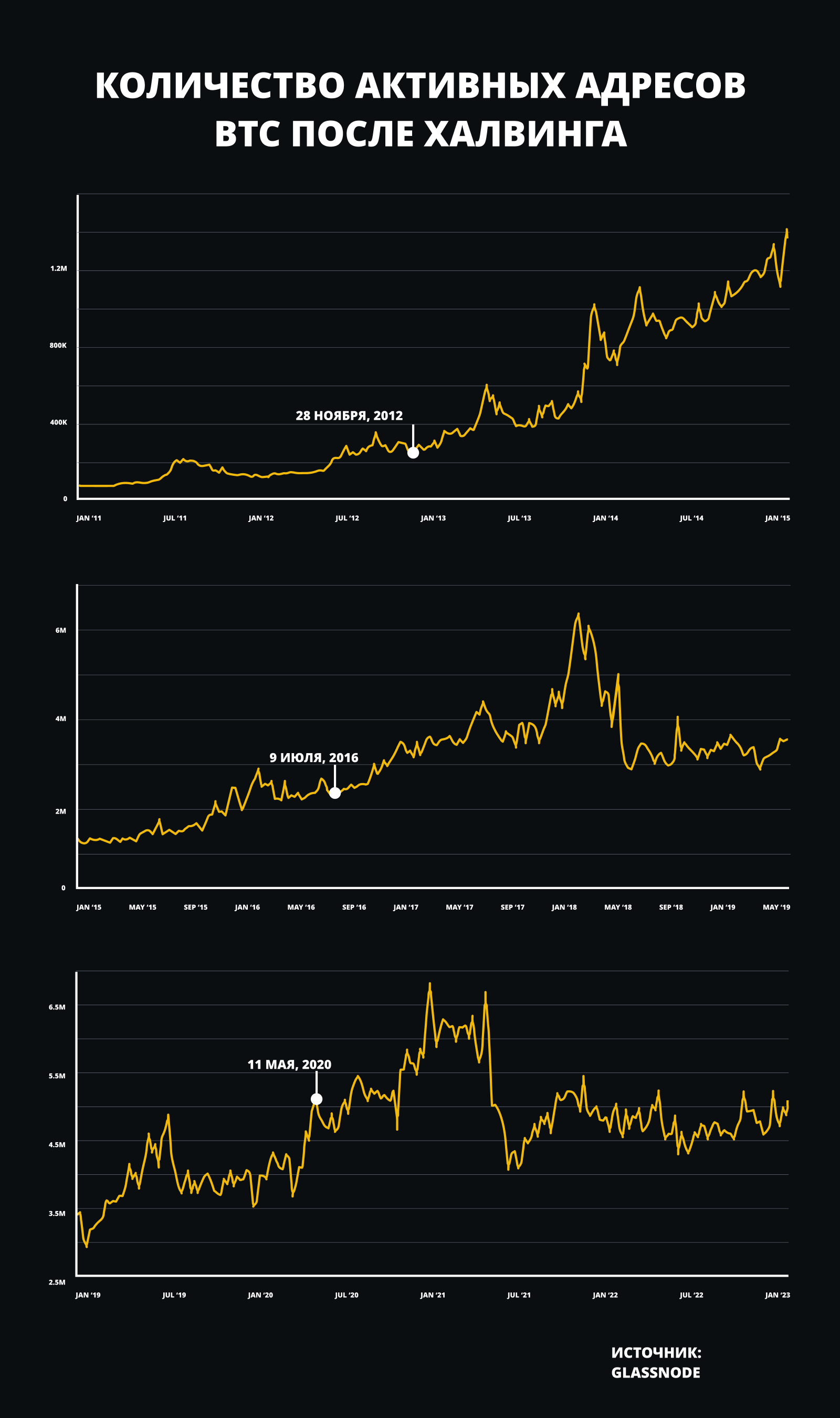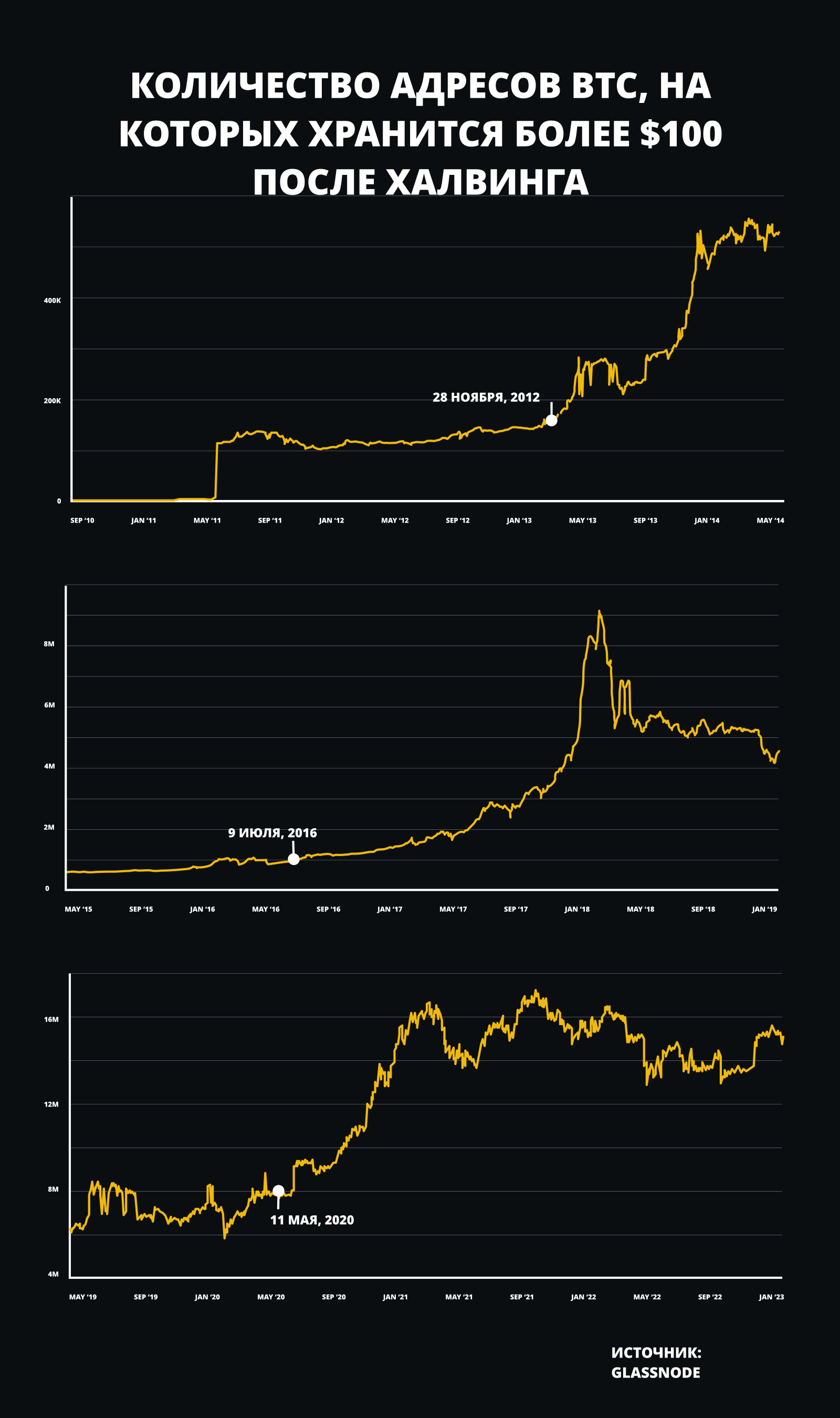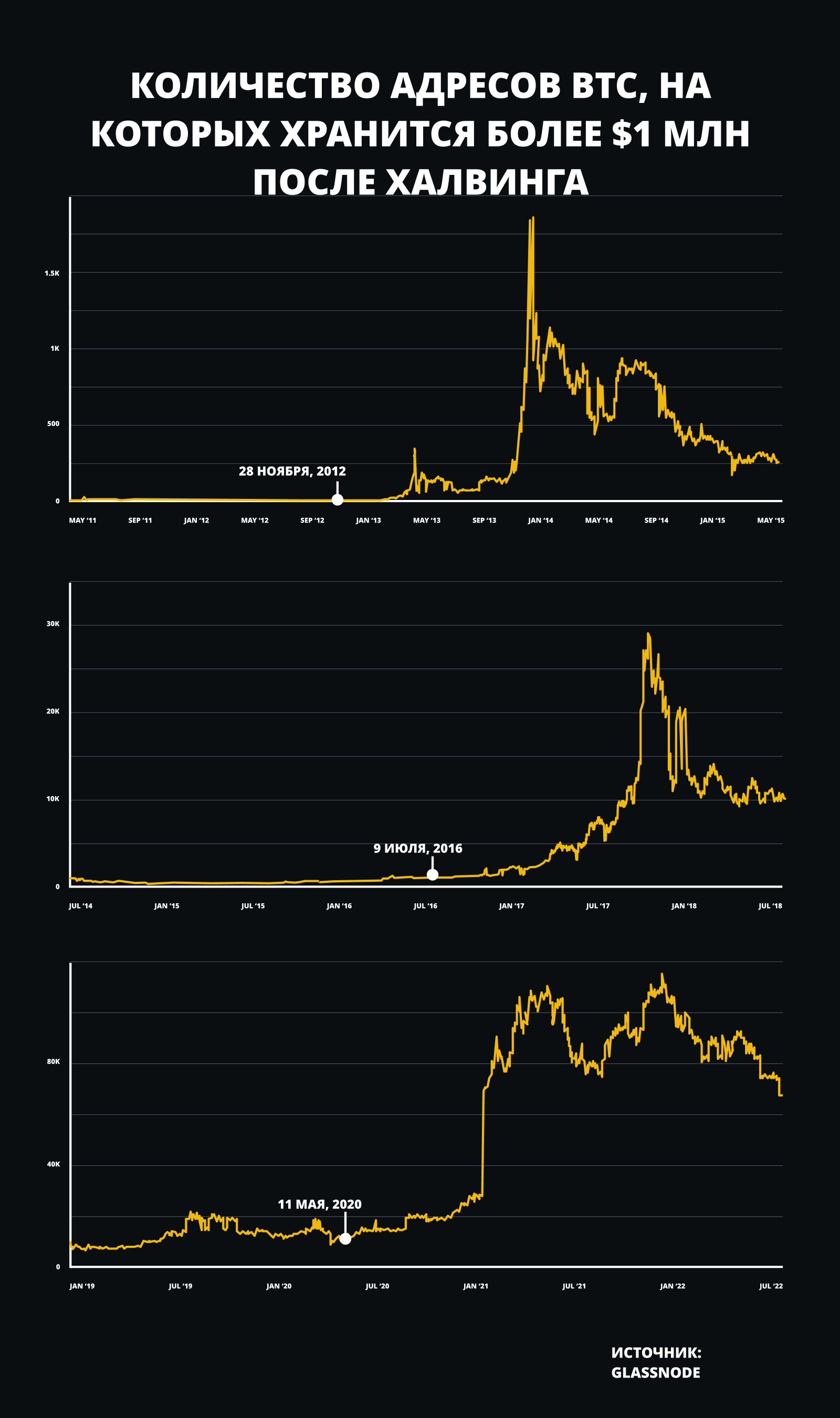Main
Bitcoin halving regulates the creation of new BTC tokens. It can influence token supply dynamics, market sentiment and adoption.
Halving increases the visibility of Bitcoin, which leads to an increase in price and adoption. This process is sparking discussions about blockchain technology, the dynamics of the Bitcoin network, and cryptocurrency as a separate asset class.
Past halvings have caused prices to rise and contributed to greater adoption of cryptocurrencies in the months following the event. The upcoming halving in April 2024 is already unprecedented for several reasons.
Bitcoin halving is a regular event that determines the fundamental value of the world's very first cryptocurrency. This process affects the entire cryptocurrency ecosystem, changing market dynamics and investor sentiment each time. In this article, we'll take a closer look at the multi-faceted impact of the Bitcoin halving on the digital asset industry and identify its implications beyond short-term price fluctuations. Since the next halving is expected in the third week of April, it’s time to analyze historical data. However, previous patterns do not guarantee the same result in the present: the current cycle is unfolding against the backdrop of unique events and is already different from precedents.
General facts
Halving is a fundamental mechanism that is built into the Bitcoin protocol. Halving regulates the emission of new tokens by regularly reducing the mining reward. This is how the system deliberately reduces the rate of creation of new BTC. Halving plays a key role in shaping the tokenomics and supply dynamics of Bitcoin, reinforcing its deflationary nature and supporting value. To brush up on the basics of Bitcoin halving, watch our video:
Bitcoin halving has always had a powerful impact on the cryptocurrency industry and the financial ecosystem as a whole. During past halvings in 2012, 2016 and 2020, certain patterns were observed in how these events affect the world of cryptocurrencies. They become inflection points that cause fluctuations in market sentiment and investor behavior, and highlight the evolution of Bitcoin as a driving force in the cryptocurrency ecosystem.
150 days later
The main effect of the halving is the change in the price and market capitalization of BTC. Halving is based on the principle of scarcity - it attracts investors looking for assets with limited supply, as it stimulates value growth. As supply gradually decreases and demand increases, in theory this should cause the price to rise. But not immediately, but over the next months.
Typically, the price of Bitcoin increases significantly within 5-6 months after each halving. For example, 150 days after the three previous halvings in 2012, 2016 and 2020, the price of Bitcoin increased by 999%, 15% and 24%, respectively.
In the periods between previous halvings, which occur every four years, Bitcoin reached new all-time highs each time. From 2020 to 2024, a new all-time high was reached in October 2022, when Bitcoin surpassed $66 thousand. What's unique about the upcoming 2024 halving is that for the first time in history, Bitcoin reached a new all-time high in early March 2024 before the halving. It is unclear whether this was a warm-up for new highs after the halving or whether the coveted peak was reached prematurely.
How exactly does halving affect prices? It shapes market sentiment and investor opinions. Halving not only keeps the community excited, but also reinforces the benefits of algorithmic monetary policy and the deflationary properties of digital assets. All of this is generating interest among people outside the crypto space and attracting new participants to the market.
Besides the price
In addition to raising the price and attracting attention (and in part due to this), halvings cause a significant and long-term increase in adoption. Increased awareness of Bitcoin during the pre- and post-halving period encourages newcomers to explore and purchase the digital currency, which helps expand the user base.
In addition, the halving encourages miners to take a fresh look at the technology underlying Bitcoin and the dynamics of the network. There are more and more conversations about network security, transaction fees and scaling. Improvements in these areas strengthen the reliability of the Bitcoin network, building trust between users and companies and creating an enabling environment for cryptocurrency adoption. It is worth considering that halving reduces the income of miners, which creates additional selling pressure for BTC among miners and accelerates the consolidation of mining operations and mining pools.
Each halving increases the need for efficiency and innovation. All of this is fueling technological advances that are increasing the performance of the Bitcoin network and its appeal to a wider audience.
Let's look at a simple acceptance indicator - the number of active BTC addresses - based on the same 150-day period. Within 150 days after each of the previous halvings, the number of new BTC addresses grew: by 83% in 2012, by 101% in 2016, and by 11% in 2020.
The number of addresses with a balance of $100 or more (a rough indicator of the number of retail investors) increased by 12% in 2012 and by 6% in 2020. And in the 150 days after the 2020 halving, it remained at approximately the same level. These are imprecise indicators of adoption dynamics and user sentiment, since one person can create several wallets. But such data allows us to judge the direction and scale of events that occurred after past halvings.
Institutional interest in Bitcoin also usually increases during the halving period. It is being driven by talk of Bitcoin's prospects as a store of value and a potential hedge against inflation. Endorsement from corporate treasuries and prominent investors solidifies BTC's status as an investable asset class, which also drives adoption. As institutional capital flows into the cryptocurrency market, infrastructure and products are emerging that are paving the way for widespread adoption of cryptocurrencies among traditional financial institutions and retail investors.
The number of wallets holding more than $1 million increased by thousands of percent in 2012, 10% in 2016, and 43% in 2020. This can be seen as an indicator of professional or institutional activity.
What's next?
The next Bitcoin halving in April will occur under unprecedented conditions, with strong inflows into the industry and centralized exchanges like Binance, as well as growing institutional investor involvement following the approval of spot Bitcoin ETFs in the US .
Add to this the surge in layer 2 solutions and DeFi activity that are increasing the practical value of the network. This situation looks extremely favorable for the Bitcoin ecosystem and the entire crypto space.
However, there is no guarantee that this halving will take place like previous ones, even despite the favorable context of 2024. Each halving represents a different stage in the evolution of Bitcoin, which is influenced by changing market conditions, technological progress and changes in legislation. While there is optimism about the 2024 halving, it is worth being cautious and aware of the unpredictability of the digital asset market. It is constantly changing, so it is important to remain vigilant.
Each Bitcoin halving causes a fundamental shift in the crypto industry, with widespread implications for market adoption and development. In addition to directly impacting price and investor sentiment, halvings increase interest and awareness, attract institutional investors, and stimulate technological innovation. All this lays the foundation for further growth and development of digital finance. The Bitcoin halving in the dynamic cryptocurrency space is a significant event that demonstrates the continued strength and resilience of the industry.
Additional materials
Denial of responsibility. Digital asset prices are volatile and involve high market risk. The value of the funds invested may go up and down. You may not get your invested funds back. You are solely responsible for your investment decisions. Binance is not responsible for your possible losses. Past performance is no guarantee of future performance. You should invest only in products that you know and understand the risks associated with them. Before investing, you should evaluate your investment experience, financial situation, investment objectives and risk tolerance, and consult an independent financial advisor. This material should not be considered financial advice. To learn more, please review our Terms of Use and Risk Disclosure.
